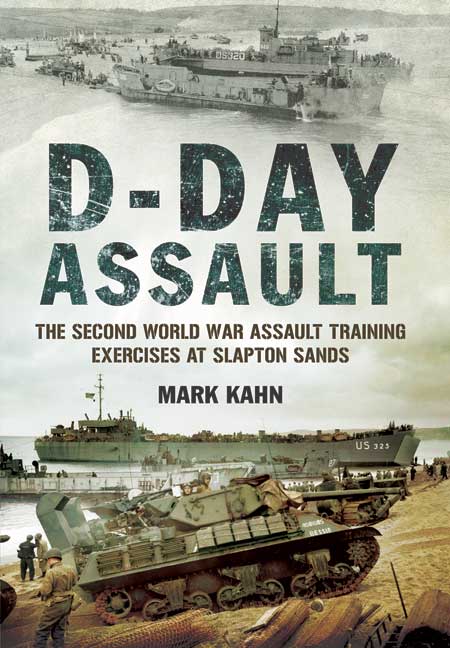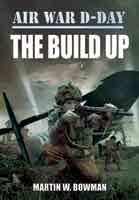D-Day Assault (Hardback)
The Second World War Assault Training Exercises at Slapton Sands
Imprint: Pen & Sword Military
Pages: 198
ISBN: 9781781593844
Published: 31st May 2014
Last Released: 19th May 2014
(click here for international delivery rates)
Need a currency converter? Check XE.com for live rates
| Other formats available - Buy the Hardback and get the eBook for free! | Price |
|---|---|
| D-Day Assault ePub (7.8 MB) Add to Basket | £6.99 |
Preceded by a massive airborne assault, the largest amphibious operation ever undertaken began on 6 June 1944 – D-Day. Over a fifty-mile stretch of heavily-fortified French coastline 160,000 Allied troops came ashore on the beaches of Normandy. Supported by more than 5,000 ships and 13,000 aircraft, they quickly gained a foot-hold in Fortress Europe.
To plan and execute such a massive military operation successfully required training. The stakes were high. There was one chance to see the landings work; failure was inconceivable. Much work was required to be done, new tactics to be worked out, new technologies to be utilised. Most of all, the training for the amphibious assault required beaches. Such locations would need to be as representative of the actual landing beaches as possible, large enough to support exercises up to divisional level and be able to safely allow the live firing of weapons both by the supporting naval and air forces as well as that of the assaulting troops.
Such a place for the Americans was found in the sleepy South Hams area of South Devon. The long shingle beach at Slapton Sands featured a freshwater lake and inundated area just behind it. The rural countryside with rolling hills, de-lineated by high hedges and featuring numerous small woods bore a remarkable similarity to the area selected for the American landing area at Utah beach.
But this choice came at a price. Over 20,000 acres of prime agricultural land, along with villages and farms were requisitioned. No less than 180 farms, 28 shops, 11 inns, 100 houses and 450 cottages, along with 3,000 residents, were expelled from the area. The peace of the South Devon coast was soon shattered as what came to be known as the Slapton Sands Assault Training Centre.
Such was the scale of the training that almost all of the US troops involved in D-Day itself landed on the beach at Slapton Sands at one time, some more than once. The American airborne forces would also practice here, being dropped behind the beaches as part of the vast exercises - Incredibly realistic, always dangerous.
The training, however, was not without risk. During one of the final major co-ordinated practices – Exercise Tiger – over 800 men were lost to enemy action whilst travelling by sea to land on the beaches at Slapton Sands. Often shrouded in intrigue, this disaster has been the subject of conspiracy theories for many years.
Following D-Day, with the troops gone, the South Hams area fell silent once more. People returned to their homes to find farmland overgrown, shell-crated and damaged. Villages and houses had been battered by shell fire and the movements of thousands of troops. Live ammunition and the detritus of war lay scattered throughout the area.
Packed with the first-hand accounts of those who lived or trained at Slapton Sands, the author, a military historian brought up in the area, investigates all aspects of the military exercises undertaken here.
The D-Day landings in France in June 1944 had their ‘dress rehearsals’ in the quiet South Hams area of south Devon. Just behind the long shingle beach at Slapton Sands was a lake and undulating area; the rural countryside with rolling hills, delineated by high hedges and numerous small woods, bearing a remarkable similarity to the area selected for the American landing at Utah beach in Normandy. In order that this area could be used for military training more 20,000 acres of prime agricultural land, along with 180 farms, 28 shops, 11 inns and 450 cottages were requisitioned, with some 3,000 residents being expelled from the area. The scale of the subsequent military training was massive, to the extent that almost all the American troops involved in the eventual D-Day landings landed on the beach at Slapton Sands, some more than once. The training was not without risk however; during Exercise Tiger, one of the final major co-ordinated practices, over 800 men were lost to enemy action whilst travelling by sea to land on the beach at Slapton Sands. Shrouded in intrigue, this disaster has been the subject of many conspiracy theories over the years. Here the author investigates all aspects of the military exercises, using first-hand accounts of those who lived or trained in this sleepy corner of the country. In support of the main section of text are five interesting appendices: Letters sent to those evacuated with regard to claiming compensation; The compensation scheme; Posters displayed throughout the rea announcing the news of the evacuation; The evacuation notice sent to all those in the area; A list of major exercises. More than 30 monochrome photographs are also included, long with a glossary, text notes and an index.
Freelancer, Stuart Asquith
As seen in Sussex Local Magazine.
Sussex Local Magazine
The author has drawn on first hand accounts of those who lived and trained at Slapton Sands, producing a unique account of the training area. This is a book that makes a sense of D-Day that eludes most accounts of the actual Normandy landings. Those many books on the D-Day invasion have to concentrate on the battle and this makes it difficult to present those battles in context with the extensive and lengthy training programme that made success possible. A highly recommended book.
Firetrench
A detailed account of the Second World War assault training exercises at Slapton Sands. Using the latest information available about this secretive event, it features all aspects of the military exercises and first hand accounts of those who lives and trained there.
Western Morning News
This superb account describes the exercises undertaken on Slapton Sands, backed up by first hand accounts from those who were there at the time. It is a dramatic and sobering account of those dark days, and a fitting reminder of the ultimate price those men paid both before and during the D-Day Landings in 1944.
Military Machines International

















